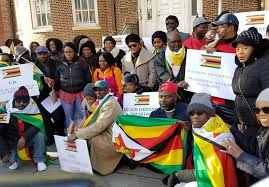It is one of the most popular times of the year to propose – according to Bridebook, a popular wedding planning app, more than 100,000 engagements happen during the festive period.
But with Britons feeling the pinch after years of high inflation, how much are people spending, what cuts are they going for, and what happens to the ring if you split up?
The ‘two-month salary rule’
When it comes to budgeting for a ring, the phrase that is often bandied about is that you should spend two months of your salary.
But did you know this actually came from a clever piece of marketing? It was the work of De Beers, a diamond cartel, in the 1930s.
The Great Depression was a disaster for De Beers, and so they began a campaign to link diamonds to getting engaged – and it really worked. In the 1940s, just 10% of engagement rings contained diamonds, but by the end of the 20th century, it was 80%.
They did it by launching an ad campaign that suggested a single month’s salary was the right amount to spend on a ring. The biggest breakthrough then came in 1947 with the phrase “A diamond is forever”.
In the 1980s, the single-month salary was bumped up to two months. A famous ad featuring a woman with a ring said: “Two months’ salary showed the future Mrs Smith what the future would be like.”
Another featured a ring and said: “How can you make two months’ salary last forever?”
By the turn of the century, De Beers had successfully made diamond engagement rings an essential part of getting married – and dictated how much a man should pay.
According to the Office for National Statistics, the average UK monthly salary is £2,297 after tax, which would mean (if you followed De Beers logic) the average Briton is spending £4,594 on a ring.
Of course, for a huge number of Britons this is unaffordable – while there are also many who can afford to pay more.
Meghan, Duchess of Sussex, wears a white engagement ring, with three diamonds, including some from Princess Diana’s collection. It is estimated to have cost Prince Harry between £150,000 and £300,000 – but is now likely worth much more.
Molly Mae, meanwhile, who broke up with fiancé Tommy Fury before making it down the aisle, was proposed to with a five-carat, oval diamond ring – worth at least £600,000.
A Sky News poll of more than 3,400 people on LinkedIn found a majority would spend between £1,000 and £5,000 on a ring.
Just 306 said they felt rings were unnecessary – less than the 507 who said they would spend more than £5,000 on a ring.
‘Two months? It’s nonsense – here’s what many people do instead’
Charlotte Leigh, the owner and founder of Lottie Leigh Fine Jewellery, tells clients to spend what they can afford.
“One month, two months, three months… it’s relative nonsense. You should never get yourself into a financial pickle over an engagement ring. Because an engagement ring, as lovely as it is, it’s not going to pay the mortgage or the rent. It’s not going to pay your electricity bill.”
She often sees couples buy a “starter” ring intending to upgrade it later down the line if and when they can afford it.
“It shows an attitude of, ‘I want you to have what you want, but actually that’s not practical right now. So let’s get you something lovely, and then when we’re in a different financial position, we’ll get you something fabulous,'” she said.
And when it comes to picking a stone, diamonds are a “lovely concept” but also practical, she said: “They are very durable and should last you forever.”









